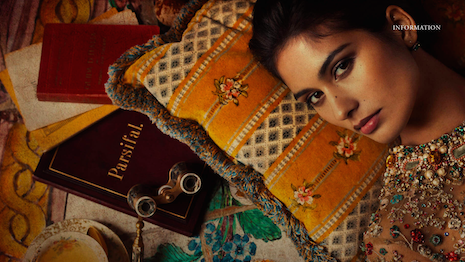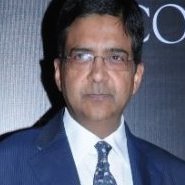 Sabyasachi is one of the leading fashion designers in India, specializing in high-end bridal wear. Image credit: Sabyasachi
Sabyasachi is one of the leading fashion designers in India, specializing in high-end bridal wear. Image credit: Sabyasachi
By Abhay Gupta
You only live once! Splurge today, save later!
Luxury is on the rise in India and the market has responded in kind.
Micro-vacations, high-end cosmetics, perfumes, personal care products, clothes, automobiles, weddings, retail, art and collectibles, streetwear, sneakers, you name it, a luxury version of that category now exists in India, each catering to the increasing number of aspiring Indians who are spending more than ever.
The fact that Indians are splurging more on luxury is a clear sign of the maturing taste and demand for better things in life.
Beyond the need to “Keep up with the Joneses,” the rising splurge trend seems to be arising for the need to experience newer and better bespoke experiences that only a few can afford.
Fueled by access to the Internet and international trends, aspiring Indians want enhanced experiences that make their lives better. Cash-rich, time-poor middle class and upper middle class Indians are driving the rise in spending across categories.
Furthermore, easy finance-driven, urge-to-splurge now exists across micro-vacations, high-end cosmetics, perfumes, and personal care products, clothes, automobiles, weddings, retail, art and collectibles, streetwear, sneakers, you name it, a luxury version of that category now exists in India vying for a bigger market share.
At the same time, Indian customers are demanding and price conscious even at that level, and expect nothing but the best and maximum bang for the buck. They are ready to spend but they need the right luxury mixed well with the right details and taste to create that amazing experience.
With the luxury business showing signs of slowing down in BRICS, India’s steady growth, political stability, better “ease of doing business” ratings, economic reforms aimed at improving GDP, and strong leadership in the global sense has given confidence to global businesses and brands alike to expand their footprint in India.
Bolstered by rising disposable incomes, the middle class and the upper middle class has now become the darling of the luxury business, with several brands launching affordable luxury products to first time luxury consumers.
Per a recent report, more than 300 international brands are planning to open stores in India by 2020, which is a clear indication towards the strong belief in the Indian luxury market’s potential.
According to several reports, while the size of the global luxury market is estimated to be around $2 trillion, the luxury market in India is estimated to grow to $50 billion by end of 2020. This amounts to approximately 1.5 percent to 2 percent of the total market size.
NITI Aayog CEO Amitabh Kant had stated at the Mint Luxury conference in 2016 that the luxury market in India has the potential to grow from $18.5 billion (2016) to $50 billion by 2020 and to $180 billion by 2025.
So far, Mr. Kant’s analysis has proven to be on track for the Indian luxury business.
- Apple posted a 12 percent increase in total income in India in FY18 as compared to FY17.
- Mercedes-Benz’s car sales in 2018 increased by 1.4 percent to 15,538 units compared to the previous year when the company sold 15,330 units.
- Kalyan Jewellers, PC Jewellers, Joyalukkas India and Tribhovandas Bhimji Zaveri Limited ,or TBZ, are amongst the five Indian luxury brands in the Deloitte’s Global Luxury Top 100 listings besides Titan Company Limited.
- Big Boyz Toyz, a luxury car dealer, has been able to generate almost 50 percent of its overall revenue via online sales. In 2018, Big Boyz Toyz achieved an annual sale of $32.9 million; and this financial year, the brand is betting bigger on its ecommerce platform and plans to expand its annual target to $52.7 million by selling 500 cars.
- 7,300 new dollar millionaires joined the Indian millionaire club in 2018, driving up its total number to 3,43,000, according to a Credit Suisse report.
The luxury market is exploding in India driven by various factors.
Simultaneously, the market is changing immensely pushing brands to create better strategies to attract potential customers. What is driving this trend?
Exclusivity in experiences
It is no more about bling and show, rather it is more about novel experiences that are exclusive, new and ones that connect emotionally at a personal level. When brands are able to offer such experiences, then money is never a barrier.
Collaborations and product drops
Several brands collaborate to create new products or exclusive collections that are limited-production runs which makes the luxury goods highly collectible and raise their value.
Omega Olympic Collection Rio 2016 is one such example of a limited edition product. Commemorating the Rio 2016 Olympics, the roughly $4,000 watch is a true collectible for Olympics, Brazil and Omega fans.
Expansion of the luxury market
Increasing opulence and availability of premium real estate in Tier II and Tier III cities is leading to a sharp rise in the expansion of luxury brands in India.
Several luxury automobile, fashion, and retail brands have opened stores in such cities, driving in-store footfall in their premium stores for the first-time luxury consumer.
Micro-vacations rather than annual breaks
Instead of long annual breaks, micro vacations is the new trend wherein the affluent consumers are now willing to splurge on locations and experiences.
International or domestic, the travel needs of consumers are changing drastically and few opt for the regular run-of-the-mill concepts rather choosing to explore newer avenues and undiscovered locales.
Merger of technology and retail
Physical and digital retail’s merger is quietly invading the global retail practices.
Cashier-less stores, faster checkouts and ease in payments are all areas where technology is enabling a better retail experience.
Decathlon’s recently launched store in Bengaluru (Bangalore) has introduced a “phygital experience” – an innovative mix of physical retail and digital touch points.
The store creates an immersive user experience specifically designed to engage and add value for customers at every step of the way while choosing their favorite sports gear.
Fueled by the global mobility of the affluent Indian, having experienced different cultures and trends, the demand for similar or even a better experience from the same brands in India is on the rise.
Pushing the luxury sector to scale further, improve services and offer a better holistic experience.
AS MIDDLE CLASS India grows in size and capacity, first-time luxury customers and millennials will be key for success in the new world.
Brands that have been strategizing a better experience for their customers will win in the short- and long-term.
 Abhay Gupta is founder/CEO of Luxury Connect and Luxury Connect Business School
Abhay Gupta is founder/CEO of Luxury Connect and Luxury Connect Business School
Excerpted from a chapter on Indian luxury consumers of the yet-to-be-released book, “The Incredible Indian Luxury Bazaar” by Abhay Gupta. Book your copy now at a special pre-launch price.
Abhay Gupta is founder/CEO of Luxury Connect and Luxury Connect Business School, Gurgaon, Haryana, India. Reach him at [email protected].
